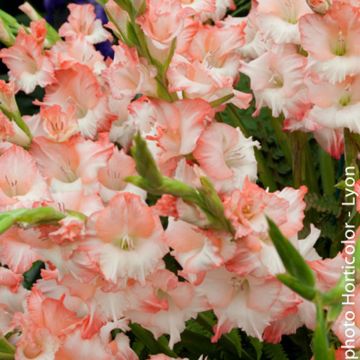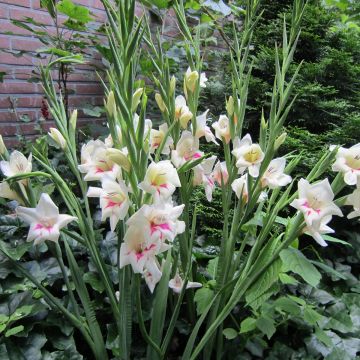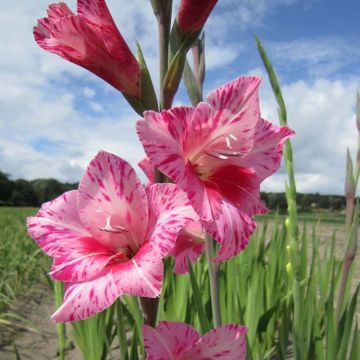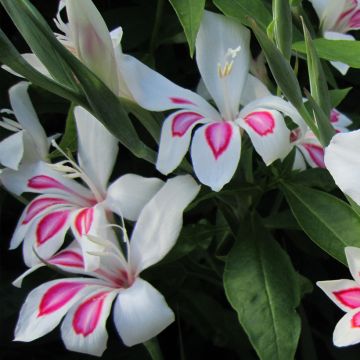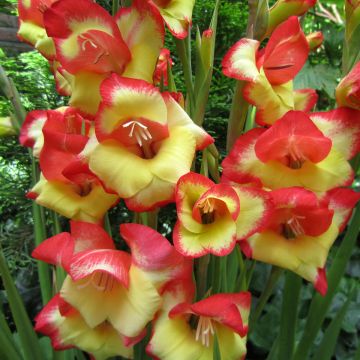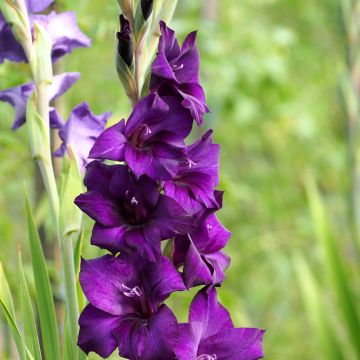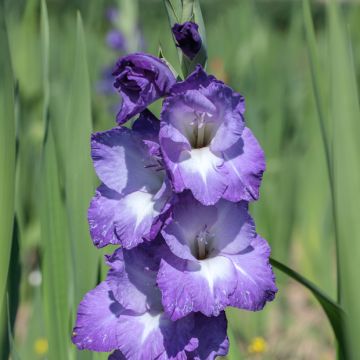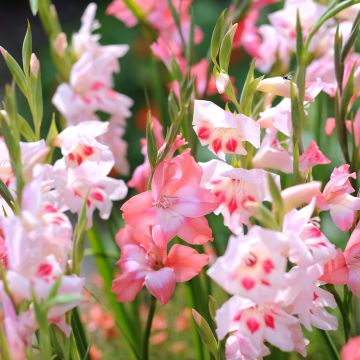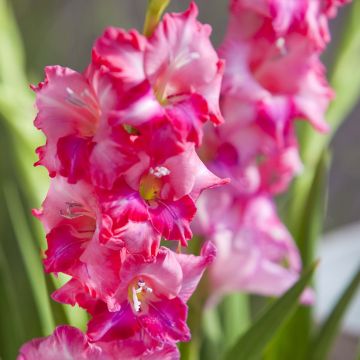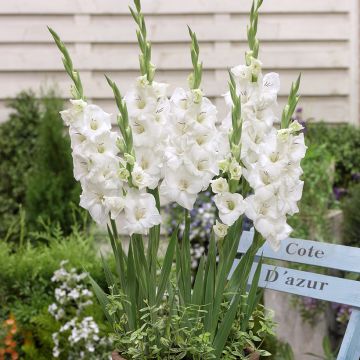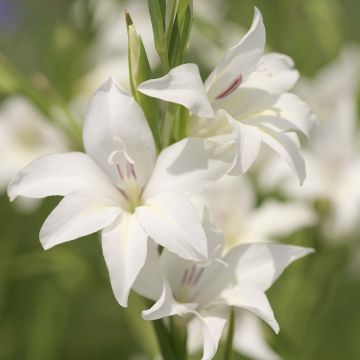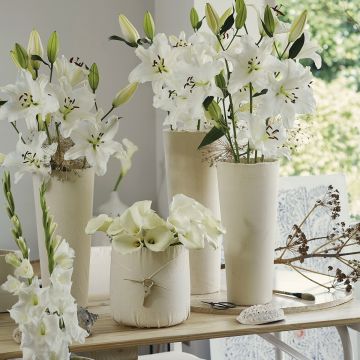Shipping country and language
Your country of residence may be:
Your country of residence is:
For a better user experience on our website, you can select:
Your shipping country:
-
Andorra
-
Austria
-
Belgium
-
Bulgaria
-
Canada
-
Chile
-
Croatia
-
Cyprus
-
Czechia
-
Denmark
-
Estonia
-
Finland
-
France
-
Germany
-
Greece
-
Hungary
-
Iceland
-
Ireland
-
Italy
-
Latvia
-
Lithuania
-
Luxembourg
-
Malta
-
Monaco
-
Netherlands
-
Poland
-
Portugal
-
Romania
-
Slovakia
-
Slovenia
-
Spain
-
Sweden
-
Switzerland
-
United Kingdom
We only deliver seed and bulb products to your country. If you add other products to your basket, they cannot be shipped.
Language:
-
French
-
German
-
Spanish
-
English
-
Italian
My Account
Hello
My wish lists
Log in / Register
Existing customer?
New customer?
Create an account to track your orders, access our customer service and, if you wish, make the most of our upcoming offers.
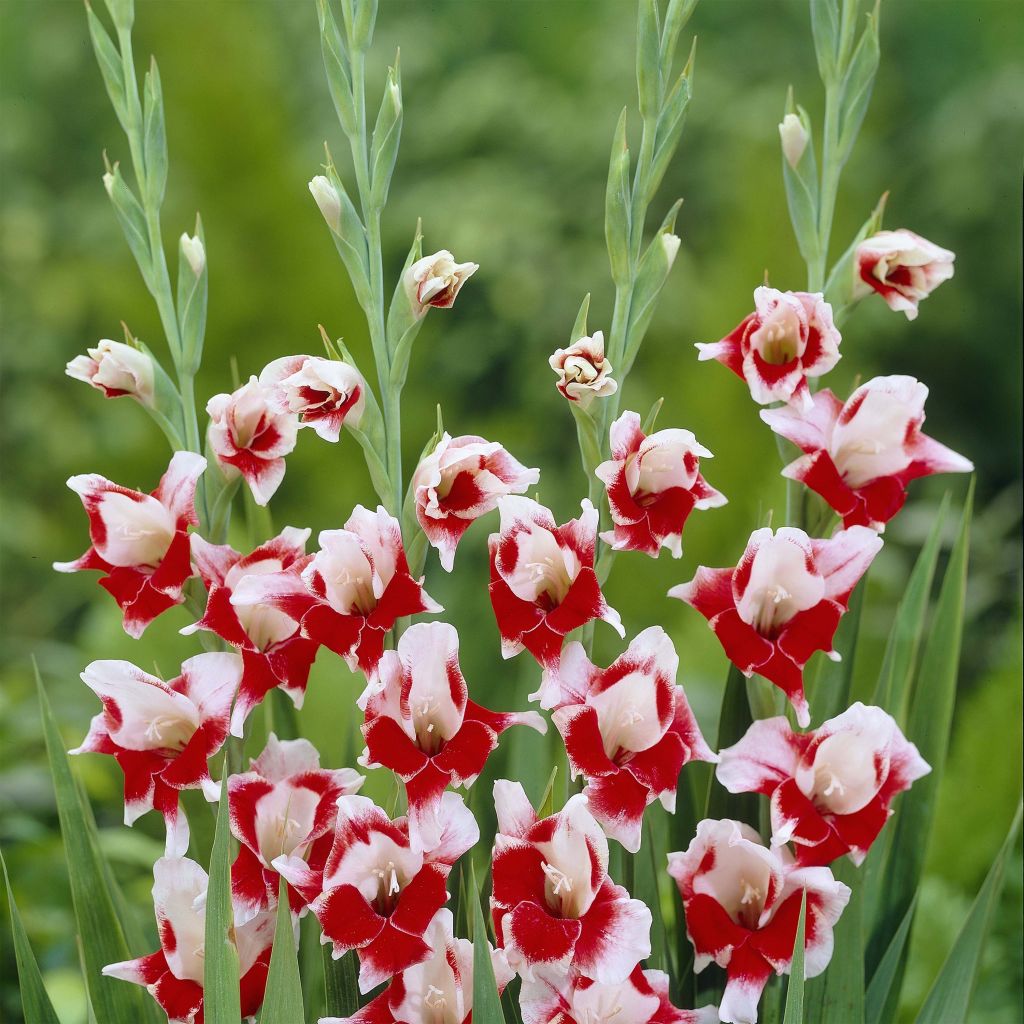

Gladiolus primulinus Bizar - Sword Lily
Gladiolus primulinus Bizar - Sword Lily
Gladiolus primulinus Bizar
Sword Lily, Primrose Gladiolus
Hello, Well, my gladiolus that I ordered from you are all white, no red. I was really looking forward to showing them off to my friends and I'm very disappointed. This year, I've had a few issues with my orders..
Marie-Christine, 07/08/2021
Why not try an alternative variety in stock?
View all →Order in the next for dispatch today!
Dispatch by letter from €3.90.
Delivery charge from €5.90 Oversize package delivery charge from €6.90.
More information
This item is not available in your country.
Schedule delivery date,
and select date in basket
This plant carries a 6 months recovery warranty
More information
We guarantee the quality of our plants for a full growing cycle, and will replace at our expense any plant that fails to recover under normal climatic and planting conditions.
From €5.90 for pickup delivery and €6.90 for home delivery
Express home delivery from €8.90.
Does this plant fit my garden?
Set up your Plantfit profile →
Description
The Gladiolus 'Bizar' (also known as Bizarre) is a variety of gladiolus that is not very tall, with small brightly bi-coloured flowers that don't go unnoticed under the summer sun. They bloom on plants that don't require staking, making them well-suited for borders and container gardening. With its dazzling colour, this gladiolus stands on its own. To accompany it, choose red, white, or green flowers, and surround it with foliage plants like alchemilla or fennel, for example.
Originally from Africa, Europe, and the Middle East, belonging to the Iridaceae family, the most colourful gladioli species come from South Africa. Cultivated gladioli are hybrids with large flowers, divided into three main groups: Grandiflorus (large-flowered), Primulinus, and Nanus (butterflies). 'Bizar' belongs to the Primulinus group, with flowers spaced further apart on the stems. It is a perennial herbaceous plant with corms (globose bulbs), broad sword-shaped leaves arranged in a fan shape, forming a clump that reaches approximately 60 cm (24in) in height, depending on the growing conditions. The leaves are topped by a spike-shaped inflorescence, with funnel-shaped flowers arranged unilaterally, almost on the same side of the sturdy flower stem. They are largely maculate with cherry red at the throat, on a white background.
Gladioli and their long colourful stems, often a bit ostentatious, are a symbol of the 70s and slightly formal floral arrangements. While they are irreplaceable in bouquets, in gardens, their silhouette benefits from the company of plants with lush or, conversely, delicate foliage, which will highlight their slightly dense flowering. Plant them in groups in beds with salvias, small grasses, linaria, monardas, wallflowers, and forget-me-nots to create large colourful bouquets. They are regulars in herb gardens, where they accompany vegetables even in the kitchen garden. For bouquet making, cut the flower spikes when the first floret starts to open. Plant them at intervals of two weeks from early spring until the end of June to enjoy flowers in the house and garden all summer long.
The gladiolus gets its name from the shape of its sword-like leaves, derived from the Latin word gladius. Its wild forms were often represented in jewellery or on carpets and fabrics made by the Semitic people before the Christian era.
About botanical gladioli:
Far from the cultivated blooms, but offering the advantage of growing like wild plants, botanical gladioli are an interesting alternative for gardeners: it is quite possible to have them in the garden, as many of them, very elegant, are native to our temperate climates.
The most common ones are Gladiolus byzantinus, with its spring blooming pink-purple flowers, which naturalise well. Gladiolus x colvillii displays flowers with various colours, usually marked with pink or red at the throat. Among the very hardy species that naturalise, we can mention Gladiolus communis from southern Europe, with pink flowers striped or maculate with white or red. Gladiolus illyricus, widespread from southern England to the Caucasus, forms superb spikes of magenta-violet flowers streaked with white. Gladiolus imbricatus bears crimson-violet flowers with a very bright white spot outlined in carmine purple.
Report an error about the product description
Gladiolus primulinus Bizar - Sword Lily in pictures
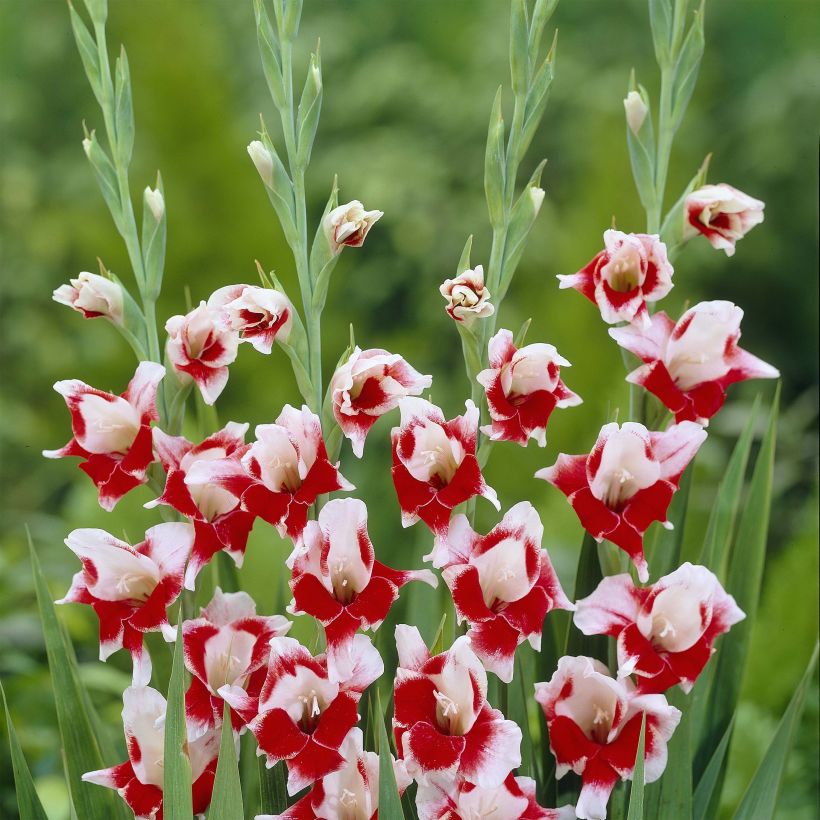

Plant habit
Flowering
Foliage
Botanical data
Gladiolus
primulinus
Bizar
Iridaceae
Sword Lily, Primrose Gladiolus
Cultivar or hybrid
Other Gladioli
Planting and care
Gladioli like rich, fertile but well-drained soils, even sandy. Plant in full sun. Space the bulbs or corms 10 to 15cm (4 to 6in) apart, covered with 10cm (4in) of soil. Fertilise after cutting the flowers. Avoid using manure, which promotes bulb rot. Gladioli are susceptible to frost, so they should be dug up when they have withered or immediately after the first frost. Cut the leaves and let them dry in a well-ventilated place for three weeks. Remove the old bulbs. Store the new bulbs and bulblets throughout the winter in a cool place, protected from frost. The bulblets will bloom in two years. It is preferable not to plant gladioli bulbs in the same spot for several years in a row. An annual rotation will yield better results. In mild climates, the many Gladioli can be planted in September-October and left in place for the winter.
Planting period
Intended location
Care
-
, onOrder confirmed
Reply from on Promesse de fleurs
Haven't found what you were looking for?
Hardiness is the lowest winter temperature a plant can endure without suffering serious damage or even dying. However, hardiness is affected by location (a sheltered area, such as a patio), protection (winter cover) and soil type (hardiness is improved by well-drained soil).

Photo Sharing Terms & Conditions
In order to encourage gardeners to interact and share their experiences, Promesse de fleurs offers various media enabling content to be uploaded onto its Site - in particular via the ‘Photo sharing’ module.
The User agrees to refrain from:
- Posting any content that is illegal, prejudicial, insulting, racist, inciteful to hatred, revisionist, contrary to public decency, that infringes on privacy or on the privacy rights of third parties, in particular the publicity rights of persons and goods, intellectual property rights, or the right to privacy.
- Submitting content on behalf of a third party;
- Impersonate the identity of a third party and/or publish any personal information about a third party;
In general, the User undertakes to refrain from any unethical behaviour.
All Content (in particular text, comments, files, images, photos, videos, creative works, etc.), which may be subject to property or intellectual property rights, image or other private rights, shall remain the property of the User, subject to the limited rights granted by the terms of the licence granted by Promesse de fleurs as stated below. Users are at liberty to publish or not to publish such Content on the Site, notably via the ‘Photo Sharing’ facility, and accept that this Content shall be made public and freely accessible, notably on the Internet.
Users further acknowledge, undertake to have ,and guarantee that they hold all necessary rights and permissions to publish such material on the Site, in particular with regard to the legislation in force pertaining to any privacy, property, intellectual property, image, or contractual rights, or rights of any other nature. By publishing such Content on the Site, Users acknowledge accepting full liability as publishers of the Content within the meaning of the law, and grant Promesse de fleurs, free of charge, an inclusive, worldwide licence for the said Content for the entire duration of its publication, including all reproduction, representation, up/downloading, displaying, performing, transmission, and storage rights.
Users also grant permission for their name to be linked to the Content and accept that this link may not always be made available.
By engaging in posting material, Users consent to their Content becoming automatically accessible on the Internet, in particular on other sites and/or blogs and/or web pages of the Promesse de fleurs site, including in particular social pages and the Promesse de fleurs catalogue.
Users may secure the removal of entrusted content free of charge by issuing a simple request via our contact form.
The flowering period indicated on our website applies to countries and regions located in USDA zone 8 (France, the United Kingdom, Ireland, the Netherlands, etc.)
It will vary according to where you live:
- In zones 9 to 10 (Italy, Spain, Greece, etc.), flowering will occur about 2 to 4 weeks earlier.
- In zones 6 to 7 (Germany, Poland, Slovenia, and lower mountainous regions), flowering will be delayed by 2 to 3 weeks.
- In zone 5 (Central Europe, Scandinavia), blooming will be delayed by 3 to 5 weeks.
In temperate climates, pruning of spring-flowering shrubs (forsythia, spireas, etc.) should be done just after flowering.
Pruning of summer-flowering shrubs (Indian Lilac, Perovskia, etc.) can be done in winter or spring.
In cold regions as well as with frost-sensitive plants, avoid pruning too early when severe frosts may still occur.
The planting period indicated on our website applies to countries and regions located in USDA zone 8 (France, United Kingdom, Ireland, Netherlands).
It will vary according to where you live:
- In Mediterranean zones (Marseille, Madrid, Milan, etc.), autumn and winter are the best planting periods.
- In continental zones (Strasbourg, Munich, Vienna, etc.), delay planting by 2 to 3 weeks in spring and bring it forward by 2 to 4 weeks in autumn.
- In mountainous regions (the Alps, Pyrenees, Carpathians, etc.), it is best to plant in late spring (May-June) or late summer (August-September).
The harvesting period indicated on our website applies to countries and regions in USDA zone 8 (France, England, Ireland, the Netherlands).
In colder areas (Scandinavia, Poland, Austria...) fruit and vegetable harvests are likely to be delayed by 3-4 weeks.
In warmer areas (Italy, Spain, Greece, etc.), harvesting will probably take place earlier, depending on weather conditions.
The sowing periods indicated on our website apply to countries and regions within USDA Zone 8 (France, UK, Ireland, Netherlands).
In colder areas (Scandinavia, Poland, Austria...), delay any outdoor sowing by 3-4 weeks, or sow under glass.
In warmer climes (Italy, Spain, Greece, etc.), bring outdoor sowing forward by a few weeks.


